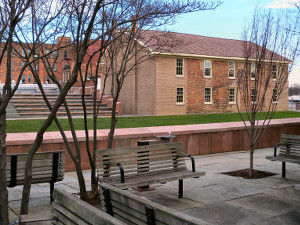
Photo by Megan E. Springate, 2011.
There is no such thing as a single-issue struggle, because we do not live single-issue lives. –Audre Lorde[1]
Intersectionality is the recognition that categories of difference (sometimes also referred to as axes of identity) including—but not limited to—race, ethnicity, gender, religion/creed, generation, geographic location, sexuality, age, ability/disability, and class intersect to shape the experiences of individuals; that identity is multidimensional. These identities are not mutually exclusive but interdependent.[2] LGBTQ is not a single community with a single history; indeed, each group represented by these letters (lesbian, gay, bisexual, transgender, and queer) is made up of multiple communities.[3] The axes of gender, generation, geographic location, ethnicity, and other factors play an important role in the history of LGBTQ America, shaping the various histories of LGBTQ communities across the nation and the places associated with them. For example, the experiences of rural LGBTQ individuals are different from those in urban areas; those of white, gay Latinos different from those of gay AfroLatino men; middle-class African American lesbians lives differ from those of working-class African American lesbians and middle-class white lesbians. Read more » [PDF 2.1 MB]
[1] Audre Lorde, “Learning from the 60s,” in Sister Outsider: Essays & Speeches by Audre Lorde (Berkeley, CA: Crossing Press, 2007), 138.
[2] Lisa Bowleg, “When Black + Lesbian + Woman ≠ Black Lesbian Woman: The Methodological Challenges to Qualitative and Quantitative Intersectionality Research,” Sex Roles 59 (2008): 312-325.
[3] Judith M. Bennett, “‘Lesbian-Like’ and the Social History of Lesbianisms,” Journal of the History of Sexuality 9 (2000): 1-24; Trina Grillo, “Anti-Essentialism and Intersectionality: Tools to Dismantle the Master’s House,” Berkeley Women’s Law Journal 10 (1995): 16-30.
The views and conclusions contained in the essays are those of the authors and should not be interpreted as representing the opinions or policies of the U.S. Government. Mention of trade names or commercial products does not constitute their endorsement by the U.S. Government.
Part of a series of articles titled LGBTQ America: A Theme Study of Lesbian, Gay, Bisexual, Transgender, and Queer History.
Previous: LGBTQ Archeological Context
Next: Making Bisexuals Visible
Last updated: October 10, 2016
